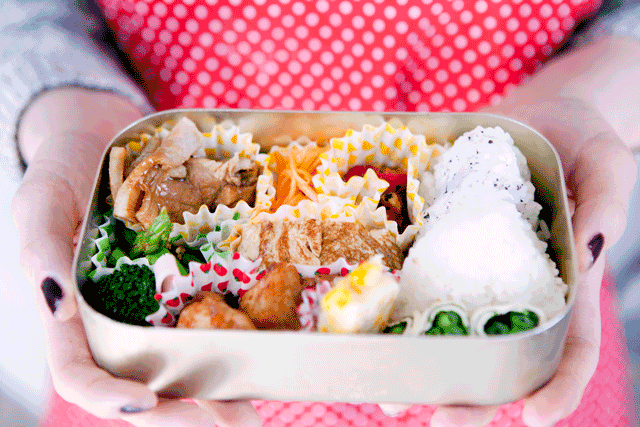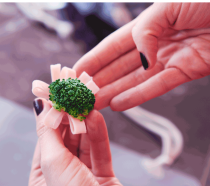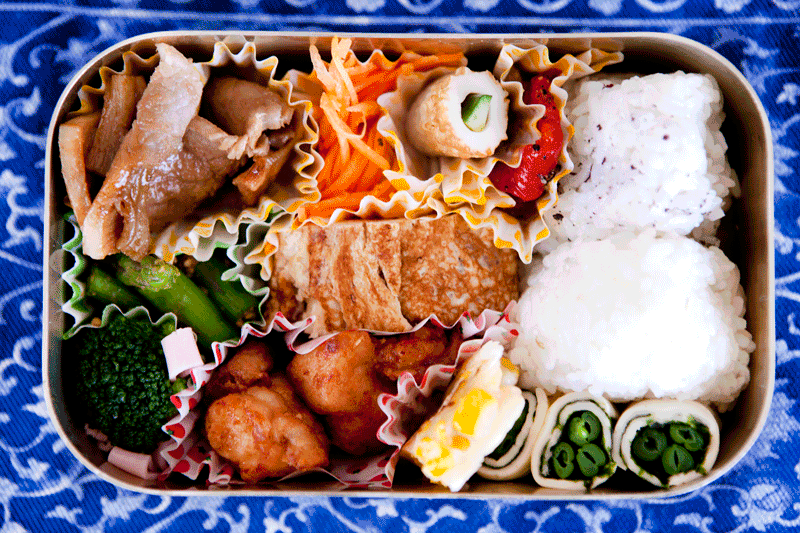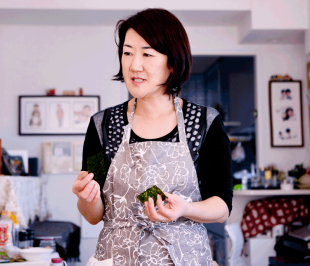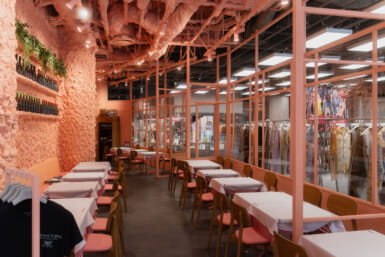Forget about cellophane-wrapped peanut butter and jelly sandwiches and a bag of potato chips: packing a lunch in Japan goes beyond a brown-bag affair. In fact, bento-making is a serious affair here. Some might even call it an art…
My own (failed) attempts at putting together a bento box had been nowhere close to masterpieces, and I had given up after a few tries, convinced I should stick to sandwiches and sliced carrots. However, my growing (and unused) bento box collection convinced me to try my hand at making a bento again, this time with the professional help of Miyuki Suyari, who teaches home cooking lessons in her own kitchen, including an increasingly popular bento class.
Bento Basics
I quickly learned that a good bento starts with the box—after all, the container keeps it all together and lifting the lid to a colorful assortment of dishes is perhaps the most rewarding part. Back in the day, bento were packed in simple bamboo leaves; now you can choose from a variety of boxes made with everything from lacquer to plastic, with many shapes and sizes.
It doesn’t stop there, of course. Although there’s plenty of freedom for what you put in, a well-balanced bento contains fresh, seasonal ingredients and presents four colors of side dishes—red, yellow, green and brown—and white for rice, noodles, or bread. A good rule of thumb is to fill half of the bento with rice and half with side dishes. Any gap should be filled so everything is kept together tightly and doesn’t shift in a bag on the way to school or the office. In other words, form and function are as important as nutritional value.
My Bento Menu
With those guidelines in mind, we began preparing the various dishes that would be used to fill the box: a few kinds of onigiri (rice balls), karaage (Japanese fried chicken), ginger pork, asparagus in sesame sauce, broccoli and ham flowers, cheese and nori (seaweed) rolls, marinated bell peppers, carrot salad, corn pancakes and tamagoyaki (omelet). Sound complicated? The key is to be prepared in advance: you can use leftovers, or freeze large quantities for the following week.
All the dishes were very simple, using no more than three or four ingredients, including Japanese cuisine staples such as sake, ginger, sesame, and mirin (a type of sweet rice wine used as a condiment). I particularly enjoyed the asparagus in sesame sauce, which can be whipped up in less than a minute using a bit of ground sesame seeds and a homemade banno (‘almighty’) sauce that can be easily prepared beforehand and stored for up to three months—and used for many more recipes. A couple of tricks: use cling film to shape the onigiri, and to make sure that the nori strips stay crispy, wait to wrap the rice balls in seaweed.
Filling (and Eating!) the Bento Box
After the chicken was fried, the pork was cooked and the omelet had cooled down, it was time to carefully place everything in the box. It’s best to cool the rice to prevent it from warming up the other foods, especially in the hot, bacteria-friendly Japanese summer. Using small disposable or washable cups for each dish also helps prevent foods from mixing with one another.
As I started filling half of my bento with my onigiri, I quickly realized there was not much space for everything else we had cooked, but somehow I was determined to make it all fit—and I did. The large variety of dishes can be divided in tiny portions, so you get a bit of everything without filling up on one dish. All remaining spaces (if any) should be filled with bite-sized foods, such as mini tomatoes and broccoli. You can sprinkle some furikake (seasoning) on the rice to add color, and voilà!
Although my efforts did not look nearly as lovely as Miyuki-san’s skillfully arranged bento, I was happy with my results, and managed to banish my bento fear in less than two hours. Perhaps the best part was that the class didn’t requre a 5 am wake-up call…
For more information, please check the official website: Simply Oishii Japanese Cooking Class (English or Japanese)
Web: simplyoishii.weebly.com
Email: [email protected]
Photos by Maaserhit Honda

